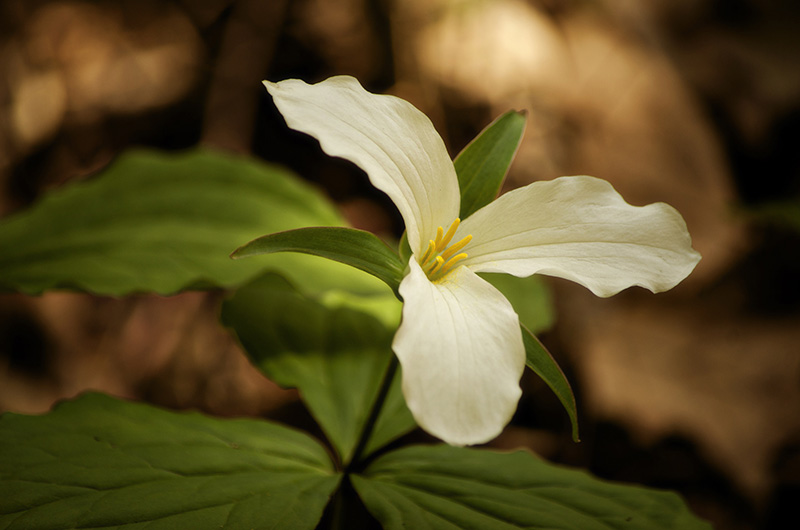When it comes to choosing plants for those shade-prone spots in the garden, just about everyone thinks of hydrangeas, hostas, and ferns. But step outside the planter box and into the world of less common shade-loving perennials.
Trillium grandiflorum
A native to North America, this easy-to-grow woodland species is beloved for its simplicity. Its whorled leaves, delicate single petals, and green sepals all come in groups of three, creating a pleasant symmetry. Commonly referred to as a wood lily, it has one of the largest blossoms of any eastern woodland native. Trillium produces a white flower— reminiscent of a dogwood bloom—April through May, which ultimately turns a distinct pink before giving way to dark berry-like capsules. The slow-growing, clump-forming perennial reaches up to 18 inches in height and needs little care once established. Cultivars include ‘Eco Double Gardenia,’ ‘Elgin Form,’ and ‘Jenny Rhodes.’
Astilbe chinensis
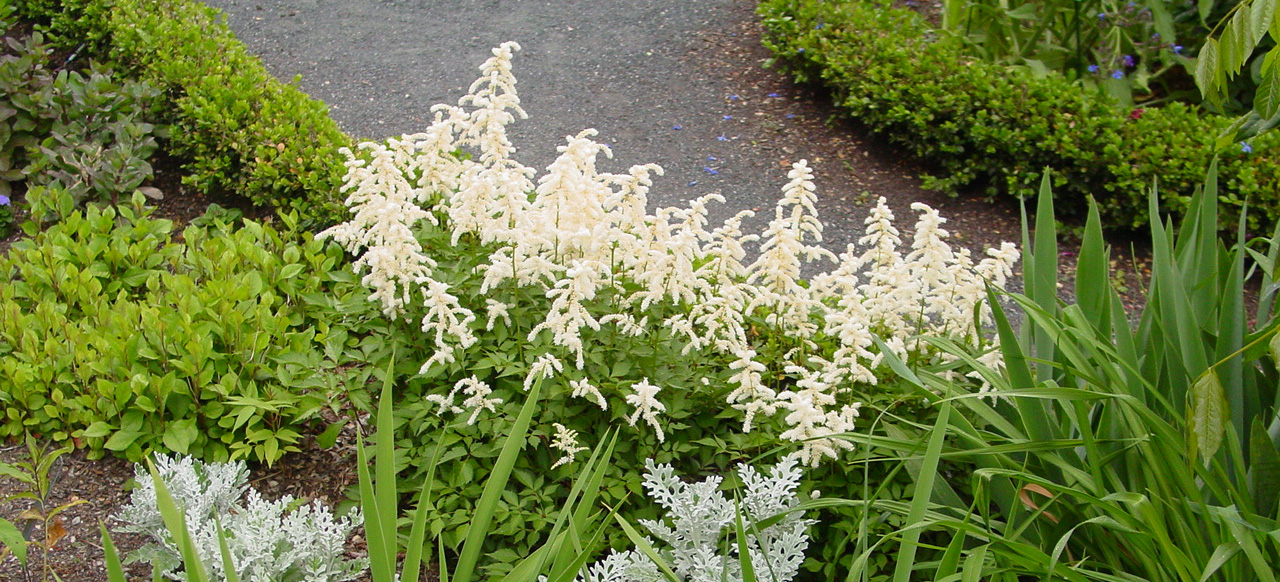 |
Known for its plumy, upright flower spikes, fern-like foliage, and low main- tenance requirements, Astilbes are a mainstay for shade gardens. Particularly striking are the white varieties, which really pop from recessed areas. Great for cutting, the blooms begin mid-to late summer and can last for weeks on end (and even lend a little texture to the garden after they have dried). Typically, this perennial matures to be one to two feet tall as well as wide. Cultivars include ‘Visions in White,’ ‘Diamonds and Pearls,’ and ‘Deutschland.’
Aconitum napellus
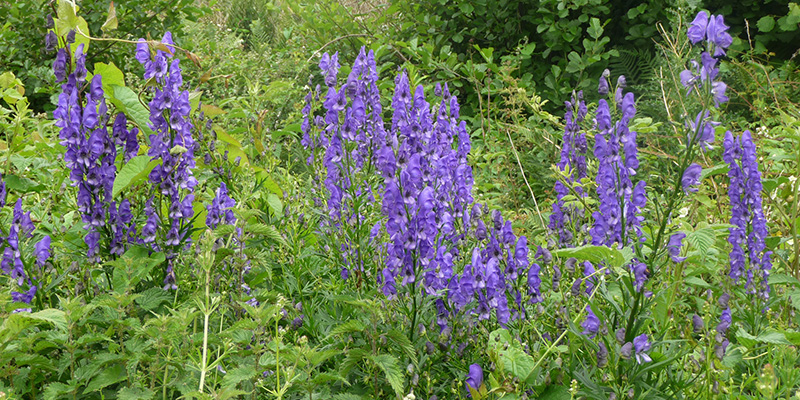 |
Reaching up to five feet in height, this woodland wonder features upright spires, purple hooded blooms, and glossy dark green foliage. Though delphinium-like in appearance, it is much tougher than the delicate old-fashioned favorite, and hence does not require staking or fussing of any kind. In addition to its royal blooms, a deeply lobed, palmate leaf structure adds architectural interest to the garden. Note: Aconitum is toxic and should be handled with care. Cultivars include ‘Newry Blue’ and ‘Sparks Variety.’
Epimedium grandiflorum
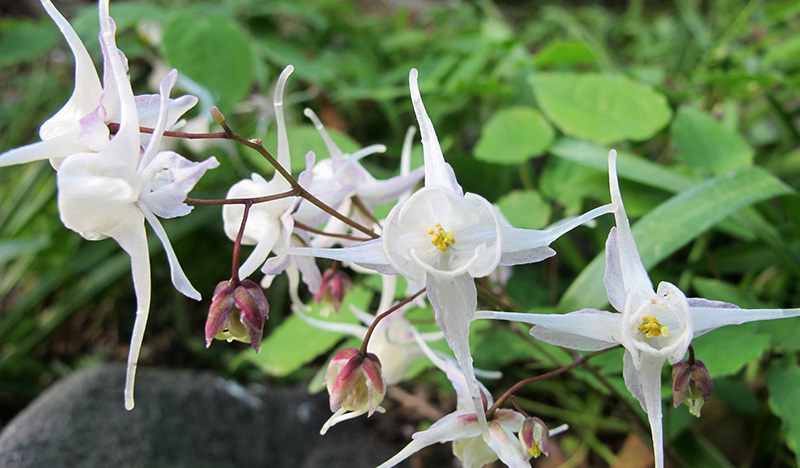 |
This darling of the plant kingdom is val- ued for its delicate early spring blooms, wiry stems, and gentle, almost lacy foliage. Ideal for use as a ground cover, this dense clump-forming shade lover produces a showy flower in May and grows 10 to 15 inches tall with a 10-to 18-inch spread. Epimedium’s popular- ity has led to a great number of variants offering a wide range of bloom colors and foliage characteristics. Cultivars include ‘Purple Prince,’ ‘Crimson,’ and ‘Purple Pixie.’
Cimicifuga racemosa
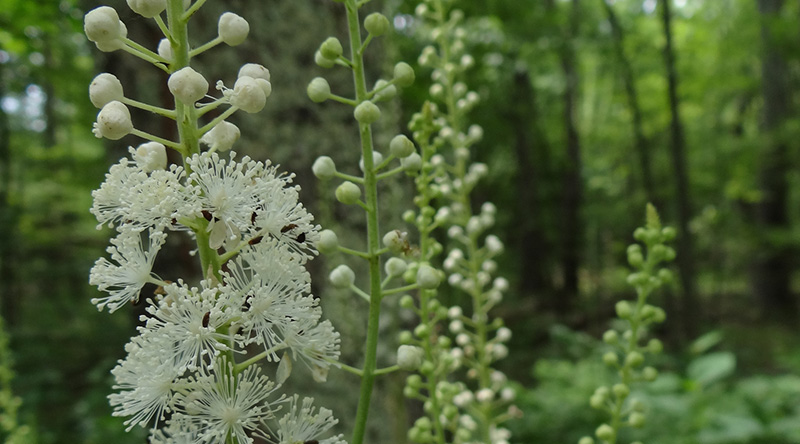 |
Reaching up to seven feet tall, this grand lady of the woods catches the eye from a distance. Add to its height slender billowy white wands of tiny star-shaped flowers,and ornamental fruit that persists into late autumn, and it’s a keeper. Flowers attract butterflies from mid- to late sum- mer, and highly textured deep dark green foliage makes it a good candidate for near year-round interest. Cultivars include ‘Brunette,’ ‘Hillside Black Beauty,’ and ‘Pritchard’s Giant.’ For really interesting additions to the shade garden, consider cultivars of these species. Typically, parent plants are hybridized for their unique qualities, resulting in particularly pleasing specimens. For true garden enthusiasts, finding good cultivars is half the fun.
Image Credits: Photo by Boris Kasimov.


